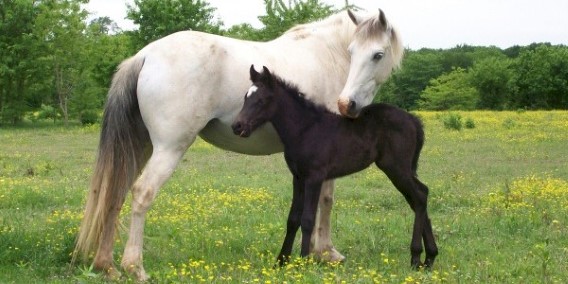Choctaw horses are the direct descendants of horses that
traveled with the Choctaw Indians on the "Trail of Tears" in the
1830s from the southeast U.S. to the reservations in Oklahoma.
The Trail of Tears was a series of forced removals of Native
American nations from their ancestral homelands in the Southeastern US to an
area west of the Mississippi River that had been designated as Indian
Territory. The forced relocations were carried out by various government
authorities following the passage of the Indian Removal Act in 1830. The
relocated people suffered from exposure, disease, and starvation while en
route, and more than four thousand died before reaching their various
destinations. The removal included members of the Cherokee, Muscogee, Seminole,
Chickasaw, and Choctaw nations.
Choctaw horses are quiet and have a great people-oriented
disposition. They are not tall horses (most are 14 to 14.2 hands), but they are
built to carry weight and can easily carry a 200 plus pound man over 50 and 100
mile races. They have very sound legs and hooves and most are never shod.
Choctaw horses come in every color and pattern and most commonly have long,
full manes and tails.
In addition to their wonderful disposition they are very
athletic and excel in endurance events. Many Choctaw horses are gaited, however
even the trotters are very smooth riding. Choctaw horses make excellent trail
horses and they also do well participating in other activities from dressage to
reining to jumping and western games. They have striking looks which make them
a natural choice for parade, trick, and exhibition horses while their calm and
engaging dispositions make them great family pets.
Today they are very rare with only about 200 horses of pure
Choctaw breeding in existence.
